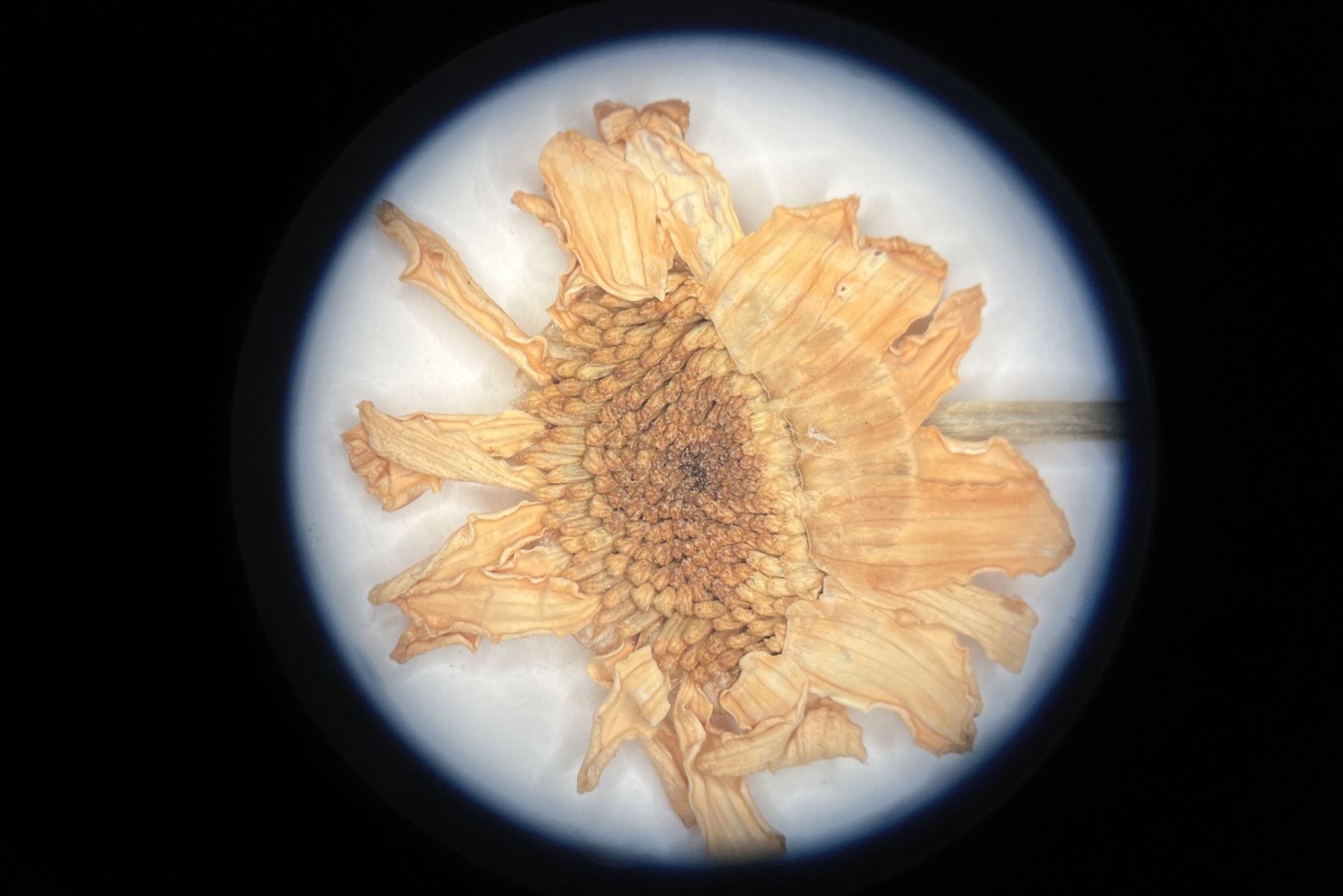
The Killer Chrysanthemum / European Eyes on Japan
Andrea Palašti will present her work within the ‘European Eyes on Japan’ project at Fabrika, Local 2, in the District, from 9 until 20 November. The exhibition is about how one flower connected politics, ecology, and climate change, but also Serbia and Japan. The opening of the exhibition is on November 9 at 7 p.m.
This project is part of the program arc Other? Europe, the European Capital of Culture, and was realized with the support of the EU-Japan Fest.
Word of the author:
The history of the Serbian-Japanese relationship is a history full of stories and legends, but none of them is as striking as the story about the Killer Chrysanthemum.
In 1890 a Japanese business man from Wakayama, Eiichiro Ueyama, invented the world’s first mosquito coil. This spiral shaped mosquito-repelling incense, was made by using dried paste of Dalmatian pyrethrum flower, and became the main source of household insecticides in the world. Eiichiro Ueyama first obtained the seeds of the Dalmatian pyrethrum from H. E. Amoore who ran a plant trading company in the U.S., but soon after realised that the origins of the flower comes from the Kingdom of Dalmatia (later Kingdom of Yugoslavia). This was the beginning of a beautiful friendship between Japan and Serbia. Eiichiro Ueyama registered the trademark of Kincho in 1910, and together with the Kingdom of Yugoslavia became the biggest export country of Dalmatian pyrethrum in the world. In 1929, the King Aleksandar I Karađorđević of the Kingdom of Yugoslavia honoured Eiichiro Ueyama with the title of Honorary Consul of the Kingdom of Yugoslavia in Osaka for appreciation of his contribution to develop more productive cultivation methods and useful applications of the Dalmatian pyrethrum. Today, his great-grandson Naohide Ueyama, president of Dainihon Jochugiku Co., Ltd. (Kincho Company) is the Honorary Consul General of Serbia, as the Kingdom of Yugoslavia dissolved during the course of history.
The Killer Chrysanthemum is a new body of work and ongoing research, which looks at the Dalmatian pyrethrum as a stage for discovering how the flower became a symbol for political and economic diplomacy: following its journey from the former Kingdom of Dalmatia (later Kingdom of Yugoslavia) to Japan and exploring the strange and apparently invisible connections between the flower, its insecticide property, economics, politics, ecology, mosquitos and climate change. Working from multiple vantage points of Serbia, Croatia and Japan, the project considers the Dalmatian pyrethrum from different perspectives, (hi)stories, geographies and systems of knowledge.
The project is developed in collaboration with Daniel Popović. The research in Japan was made possible through the Photography Project ‘European Eyes on Japan/Japan Today’ – invited by curator and artistic director Mikiko Kikuta, and funded by the EU Japan Fest Japan Committee (Tokyo). Grateful acknowledgement is given to the Dainihon Jochugiku Co., Ltd. (Kincho Company), to the Entrepreneurial Museum of Challenge and Innovation – Osaka Chamber of Commerce and Industry and to the Innoshima Flower Center for sharing their expertise and picture archives. The exhibition is accompanied with an introductory essay written by Assoc. Prof. Dr Andrija Filipović and poetry readings by Jovan Jakšić.
With special thanks to: Naohide Ueyama (president of Dainihon Jochugiku and Honorary Consulate General of the Republic of Serbia in Osaka); Rina Suzuki and Kazuhiro Yoshida (Dainihon Jochugiku, Osaka); Seiichi Kashima, Hiroyuki Kawai and Hiroko Kusumi (Kishu Factory Dainihon Jochugiku, Arida); Tomoyuki Hikitsuchi, Dr. Yukio Kikuta, Takanori Yamashiro, Yumi Kawajiri, Toshiya Ohshima, Honami Mitsuishi, Takahiro Yanagisawa, Takahiro Mita (Research & Development Laboratory Dainihon Jochugiku, Osaka); Yachiho Okano (Innoshima Flower Center); Watanabe Koichi (artist, Osaka); Mikiko Kikuta (curator, Tokyo); Cathy Hirano (translator, Takamatsu); Yuichi Hirano (architect, Takamatsu); Hitomi Kawasaki (Gendaibonsai Japan, Kyoto); Tamami Muneyasu (Setouchi Triennale Supervisor, Takamatsu); Dr. Nobuyuki Tanaka (National Museum of Nature and Science, Department of Botany, Tsukuba); Prof. D.Sc. Hidetoshi Nagamasu (Kyoto University Museum); Prof. D.Sc. Kazuhiko Matsuda (Nara Kindai University, Department of Applied Biological Chemistry); Masamichi Yamano (Takamijima Pyrethrum House); Toki Noriko (Toki Art Space, Tokyo); Yukino Takashima (translator, Goethe-Institute Osaka Kyoto); Haruka Shirahama (Alt_Medium, Tokyo); Hirofumi Nakamae (artist, Osaka); Atsuko Kotaka (artist, Fujino); Shuichi Nemoto (Herbarium of the University of Tokyo TI); Satoshi Nagae (Exercise Physiologist, Yokohama); Shuji Kogi and Saori Hakoda (EU-Japan Fest, Tokyo); Daishi Uchida and Yo Yakushi (Tokyo branch of Plant Protection Office – Ministry of Agriculture, Forestry and Fisheries); Members of the Gallery 176 (Osaka); Aleksandra Kovač and Marija Perišić (Embassy of the Republic of Serbia in Japan, Tokyo); Dr. Milica Rat (Herbarium BUNS, Department of Biology and Ecology, Faculty of Sciences, University of Novi Sad); Dr. Milica Aćimović (The Institute of Field and Vegetable Crops, Department of vegetable and alternative crops, Novi Sad); Assoc. Prof. D. Sc. Martina Grdiša and D. Sc. Filip Varga (Faculty of Agriculture Department for Seed Science and Technology, University of Zagreb, Centre of Excellence for Biodiversity and Molecular Plant Breeding, Zagreb); D. Sc. Marija Jug-Dujaković and D. Sc. Tonka Ninčević (Institute for Adriatic Crops and Karst Reclamation, Split); Veronika Gamulin (art historian and independent curator, Zagreb); Viktor Popović (artist/designer, Split).
Andrea Palašti (b. 1984) is an artist and educator based in Novi Sad, Serbia. She works across artistic, curatorial and pedagogical boundaries experimenting with ways of knowledge production. Her work includes photography, video and illustrated lectures – often in playful ways. Her practice is highly informed by collaborations with other artists/collectives, her family, students, curators, journalists, scientists and/or historians. She is a board member of the SULUV gallery, and associate professor at the Academy of Art in Novi Sad, where she teaches Elements of Visual Art, blending her collaborative artistic research projects with educational strategies. Since 2014, she has teamed up with picture researcher Daniel Popović (b.1978) on investigating picture archives and its potential to unveil a nuanced understanding of the world.
The project is part of the Other? Europe programme arch.
Photo: Andrea Palašti. Dalmatian pyrethrum (Tanacetum cinerariifolium /Trevir. /Sch. Bip.), Herbarium BUNS, Department of Biology and Ecology, Faculty of Sciences, University of Novi Sad; part of the project The Killer Chrysanthemum.